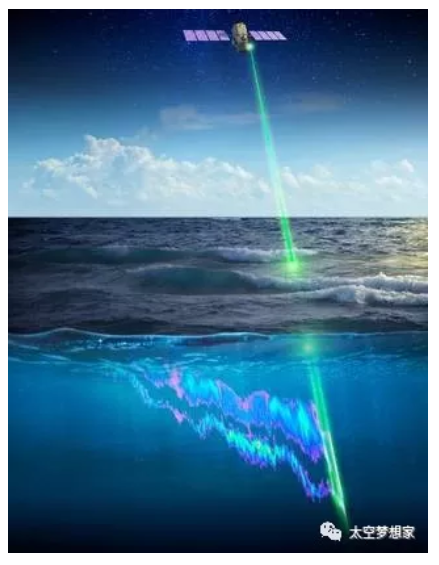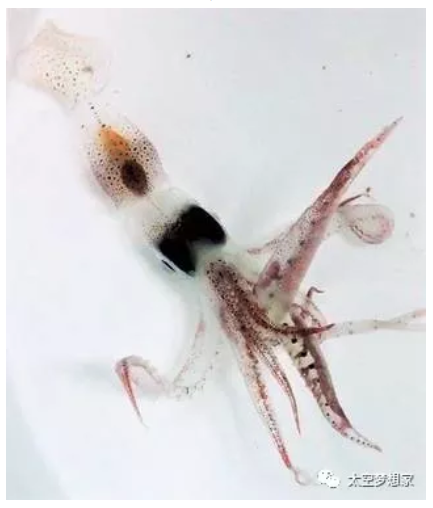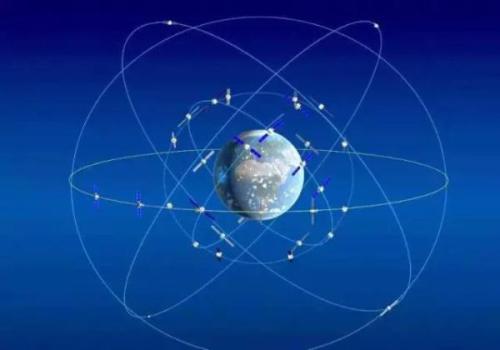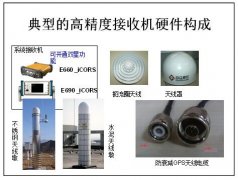研究人员利用基于太空的CALIPSO激光雷达测量了地球上最大的动物迁徙,这种动物迁徙发生在小型海洋生物夜间从深海游上来以浮游植物为食,然后在日出之前再次游回来。
每天晚上,在黑暗的掩护下,无数的小海洋生物——从鱿鱼到磷虾——从海洋深处游到接近海面的地方觅食。这是地球上最大的动物迁徙,也是地球气候系统的重要组成部分。由于太空激光的意外使用,这一现象首次在全球范围内被观察到。
研究人员利用2006年发射的云气溶胶激光雷达和红外探路者卫星观测(CALIPSO)卫星观察了这种垂直迁移模式。他们在周三的《自然》杂志上发表了他们的发现。
“这是一项最新的研究,它证明了一件令许多人吃惊的事情:lidars具有从太空提供科学上有用的海洋测量数据的敏感性。”位于弗吉尼亚州汉普顿的NASA兰利研究中心(Langley Research Center)的科学家、该研究的合著者克里斯·霍斯特勒(Chris Hostetler)说,“我认为我们只是触及了激光雷达可以实现的令人兴奋的新海洋科学的表面。”
这项研究着眼于一种被称为Diel垂直迁移(DVM)的现象,在这种现象中,小型海洋生物在夜间从深海游上来,以接近海面的浮游植物为食,然后在日出之前返回深海。科学家们认识到,在全世界范围内,这种自然的每日迁徙是地球上动物迁徙总数最多的一次。
每日垂直迁移的生物对地球气候的累积影响是显著的。在白天,海洋浮游植物进行光合作用,并在此过程中吸收大量的二氧化碳,这有助于海洋吸收大气中的温室气体。经历DVM的动物游到海面上,以海洋表面附近的浮游植物为食,然后游回海面,带走浮游植物的碳。这些碳中的大部分会被排入海洋深处,在那里它们被有效地困在海洋深处,阻止它们释放回大气。
像小乌贼、鱼和磷虾这样的微小生物是海洋中大规模垂直迁移模式的一部分,目前已经在世界各地的太空中进行了测量。
“来自太空的激光雷达让我们能够每隔16天在全球范围内对这些迁徙动物进行采样,持续10年。”这项研究的负责人、俄勒冈州科瓦利斯俄勒冈州立大学(Oregon StateUniversity)的高级研究科学家和教授迈克·贝伦菲尔德(MikeBehrenfeld)说,“我们从未有过这样的全球覆盖范围,让我们得以观察这些动物的行为、分布和数量。”
研究人员将注意力集中在热带和亚热带海洋区域,他们发现,虽然在低营养和清澈的水域中,垂直迁移的动物较少,但它们在这些地区的动物总数中所占的比例更大。这是因为,当视觉捕食者在清澈的海洋区域拥有最大优势的时候,这种迁徙行为主要是为了躲避视觉捕食者而进化出来的。
在较阴暗和营养丰富的地区,经历DMV的动物数量较多,但它们在动物总数中所占的比例较小,因为视觉捕食者处于劣势。在这些地区,许多动物日夜都呆在水面附近。
研究人员还观察了迁徙动物种群的长期变化,这可能是由气候变化引起的。在研究期间(2008年至2017年),CALIPSO的数据显示,在北太平洋和南太平洋、北大西洋和南印度洋的亚热带水域,迁徙动物的生物量有所增加。在热带地区和北大西洋,生物量减少。除了热带大西洋区域外,所有这些变化都与浮游植物产量的变化相关。
动物介导的碳传送带被认为是地球碳循环的重要机制。科学家们正在把经历DVM的动物作为气候模型的关键元素。
贝伦菲尔德说:“这些建模者还没有一个全球性的数据集来校准这些模型,告诉他们这些迁移者在哪里最重要,在哪里最丰富,以及随着时间的推移它们是如何变化的。”“新的卫星数据让我们有机会将卫星观测与模型结合起来,更好地量化这种巨大的动物迁徙对地球碳循环的影响。”
卫星数据也与全球渔业有关,因为迁徙的动物是潜伏在海洋深处的大型捕食者的重要食物来源。这些捕食者通常是对商业渔业有吸引力的鱼类品种。DVM信号越大,深海鱼类的数量就越多。
虽然CALIPSO的激光是用来测量云层和大气气溶胶的,但它可以穿透海洋表层20米以上的区域。如果迁徙的动物到达这一层,它们就会被CALIPSO探测到。
NASA利用太空的优势来了解和探索我们的家园,改善我们的生活,保护我们的未来。该机构对地球复杂自然环境的观测对了解我们星球的自然资源和气候现在以及将来如何变化至关重要。
原文:
NASA, French Space Laser Measures Massive Migration of Ocean Animals
Researchers used the space-based CALIPSO lidar to measure the planet’slargest animal migration, which takes place when small sea creatures swim upfrom the depths at night to feed on phytoplankton, then back down again justbefore sunrise.
Credits: NASA/Timothy Marvel
Tiny creatures such as small squid, fish and krill are part of the massivevertical migration pattern in the ocean that has now been measured around theworld from space.
Credits: Chandler Countryman
Every night, under the cover of darkness, countless small sea creatures –from squid to krill – swim from the ocean depths to near the surface to feed.This vast animal migration – the largest on the planet and a critical part ofEarth’s climate system – has been observed globally for the first time thanksto an unexpected use of a space-based laser.
Researchers observed this vertical migration pattern using theCloud-Aerosol Lidar and Infrared Pathfinder Satellite Observations (CALIPSO)satellite -- a joint venture between NASA and the French space agency, CentreNational d'Etudes Spatiales -- that launched in 2006. They published theirfindings in the journal Nature Wednesday.
“This is the latest study to demonstrate something that came as a surpriseto many: that lidars have the sensitivity to provide scientifically usefulocean measurements from space,” said Chris Hostetler, a scientist at NASA'sLangley Research Center in Hampton, Virginia, and co-author on the study."I think we are just scratching the surface of exciting new ocean sciencethat can be accomplished with lidar.”
The study looks at a phenomenon known as Diel Vertical Migration (DVM), inwhich small sea creatures swim up from the deep ocean at night to feed onphytoplankton near the surface, then return to the depths just before sunrise.Scientists recognize this natural daily movement around the world as thelargest migration of animals on Earth in terms of total number.
The cumulative effect of daily vertically migrating creatures on Earth'sclimate is significant. During the day, ocean phytoplankton photosynthesizeand, in the process, absorb significant amounts of carbon dioxide, whichcontributes to the ocean's ability to absorb the greenhouse gas from theatmosphere. Animals that undergo DVM come up to the surface to feed onphytoplankton near the ocean’s surface and then swim back down, taking thephytoplankton carbon with them. Much of this carbon is then defecated at depthswhere it is effectively trapped deep in the ocean, preventing its release backinto the atmosphere.
"What the lidar from space allowed us to do is sample these migratinganimals on a global scale every 16 days for 10 years," said MikeBehrenfeld, the lead for the study and a senior research scientist andprofessor at Oregon State University in Corvallis, Oregon. "We've neverhad anywhere near that kind of global coverage to allow us to look at thebehavior, distribution and abundance of these animals."
Zeroing in on tropical and subtropical ocean regions, researchers foundthat while there are fewer vertically migrating animals in lower-nutrient andclearer waters, they comprise a greater fraction of the total animal populationin these regions. This is because the migration is a behavior that has evolvedprimarily to avoid visual predators during the day when visual predators havetheir greatest advantage in clear ocean regions.
In murkier and more nutrient-rich regions, the abundance of animals thatundergo DMV is higher, but they represent a smaller fraction of the totalanimal population because visual predators are at a disadvantage. In theseregions, many animals just stay near the surface both day and night.
The researchers also observed long-term changes in populations ofmigrating animals, likely driven by climate variations. During the study period(2008 to 2017), CALIPSO data revealed an increase in migrating animal biomassin the subtropical waters of the North and South Pacific, North Atlantic andSouth Indian oceans. In the tropical regions and North Atlantic, biomassdecreased. In all but the tropical Atlantic regions, these changes correlatedwith changes in phytoplankton production.
This animal-mediated carbon conveyor belt is recognized as an importantmechanism in Earth’s carbon cycle. Scientists are adding animals that undergoDVM as a key element in climate models.
"What these modelers haven't had is a global dataset to calibratethese models with, to tell them where these migrators are most important, wherethey're most abundant, and how they change over time," said Behrenfeld."The new satellite data give us an opportunity to combine satelliteobservations with the models and do a better job quantifying the impact of thisenormous animal migration on Earth’s carbon cycle."
The satellite data are also relevant to global fisheries because themigrating animals are an important food source for larger predators that lurkin the depths of the ocean. Those predators are often species of fish that areattractive to commercial fisheries. The larger the DVM signal, the larger thepopulation of fish that can live in the deep sea.
Though CALIPSO's laser was designed to measure clouds and atmosphericaerosols, it can penetrate the upper 20 meters of the ocean's surface layer. Ifthe migrating animals reach this layer, they are detected by CALIPSO.
NASA uses the vantage point of space to understand and explore our homeplanet, improve lives and safeguard our future. The agency’s observations ofEarth’s complex natural environment are critical to understanding how ourplanet’s natural resources and climate are changing now and could change in thefuture.
原文链接:https://www.nasa.gov/press-release/nasa-french-space-laser-measures-massive-migration-of-ocean-animals
注:所有图片来在NASA











